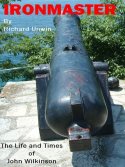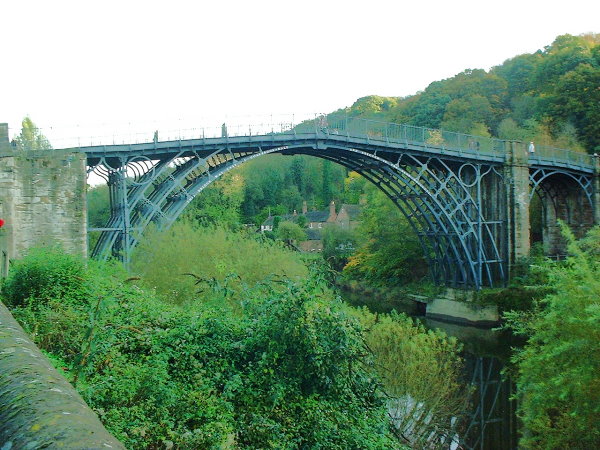JOHN WILKINSON - IRONMASTER
| The eighteenth century was a time which began with England as an agrarian economy, and ended with a burgeoning technical industry. This was the age of the great engineering innovators as James Watt (steam)and James Brindley (canals). Science, too, was to make great strides in this century, with persons such as Joseph Priestly, who correctly identified the presence of oxygen in the atmosphere. At the beginning of the eighteenth century, most labour worked on the land; by the beginning of the ninteenth century migration of workers from field to factory was well underway. The Industrial Revolution, as it came to be known, depended on a source of cheap iron, and the ironmasters of the period made huge personal fortunes, and lost them too. One of the greatest, and arguably the most innovative Ironmaster, was (Iron Mad) John Wilkinson. Wilkinson had developed a new way of casting and boring cannon, and it was Matthew Boulton, James Watt's business partner, who put the engineer in contact with the ironmaster. The steam engine of James Watt, though theoretically sound, could not be made to work due to the impossibility of producing steam cylinders with an accurate round bore. John Wilkinson adapted his own invention for boring cannon to enable the cylinders to be cast and machined true. This proved the answer to James Watt's problems and from this point, the steam engine became a powerful and reliable sourch of industrial power. Wilkinson went on to use iron in new and immaginitive ways, building the first practical iron boat, and even an iron-framed house. When he died he was buried in an iron coffin. |  This e-book tells the fascinating story of John Wilkinson and his times. It is available for the Kindle reader, ipad, Blackberry, PC and Mac. |
 |
John Wilkinson was a major subscriber to the eighteenth century project
that constructed the first iron bridge in the world. It still spans the River Severn
in the Shropshire town that bears its name: Ironbridge. Today it is open for
foot passage only, but it stands as firm as it did when first built.
The area around Ironbridge has many museums dedicated to the Industrial Revolution
particularly the iron making industry.
|